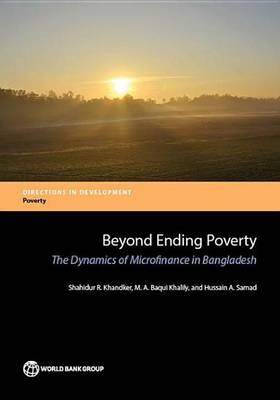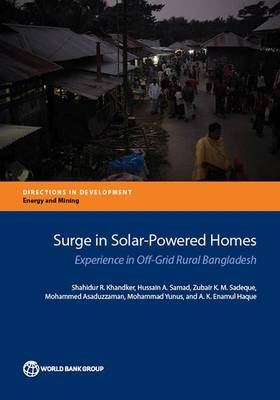Directions in development
2 total works
The recent past has witnessed phenomenal growth in MFIs around the world. Today as many as 200 million people are beneficiaries of microfinance. Given its worldwide attention, microfinance has received serious criticism, including the argument that it is a fad with less-than-expected benefits for the poor. Surely, microfinance is not without any pitfalls. Yet the premise of improving access to financial services for consumption smoothing by the poor has never been a subject of controversy. What has been controversial is whether microfinance can alleviate poverty. That the poor lack an effective and affordable alternative financing mechanism to support income generation does not necessarily mean microfinance is a panacea since it involves entrepreneurial skills, which many poor lack. It is little wonder that studies evaluating the benefits of microfinance have produced conflicting results. Of course, study findings are contextual: They are positive in conducive environments and less so in unfavorable ones. Microfinance must be distinguished from anti-poverty schemes (e.g., conditional cash transfers) because benefits from microfinance-supported activities, which involve participants' entrepreneurial skills and ability, take time to realise. This book using household long panel survey of 1991/92-2010/11 from Bangladesh addresses some of criticisms - including whether pushing microfinance has made it redundant as a tool for poverty reduction - while investigating whether it still matters for the poor after two decades of extensive growth. The book's findings confirm the positive effects of continued borrowing from a microfinance program. Despite a manifold increase in microfinance borrowing, loan recovery has not declined and long-term borrowers are not trapped in poverty or debt. Interest rates charged by MFIs are not too high for realizing returns on investment, although the MFIs have scope for lowering them. The book is expected to contribute to the ongoing debate on the cost-effectiveness of microfinance as a tool for inclusive growth and development. It is expected to fill knowledge gaps in understanding the various virtues of microfinance against its portrayal as having drifted from its original poverty-reduction mission
Surge in Solar-Powered Homes
by Shahidur R. Khandker, Hussain A. Samad, Zubair K.M. Sadeque, M. Asaduzzaman, Mohammad Yunus, and A. K. Enamul Haque
Published 20 October 2014
Bangladesh has the world's fastest growing, off-grid solar home system (SHS) coverage. In the past decade, the number of SHS installations has risen phenomenally–from a five-year target of 50,000 in 2003 to 50,000 a month in 2013, with support from the World Bank and other development partners. Even so, only 10 percent of off-grid households have been reached, suggesting ample room for continued expansion. Given the recent surge in SHS adoption, a key policy issue is whether the partial subsidy provided under the current program, implemented by the Infrastructure Development Company Limited (IDCOL), should be continued.
Surge in Solar Powered Homes: Off-Grid Experience in Bangladesh assesses the country's remarkable growth in SHS, its support schemes, and the welfare impacts for rural households, using both large-scale household survey and institutional data. The book's findings clearly demonstrate that the social benefits from SHS adoption far exceed the cost of the subsidy. Within the current market incentive structure, there is tremendous scope for broadening the rural market reach. But the high upfront cost of purchasing a SHS at current market prices is a barrier to future sales, suggesting the continued need for IDCOL's well-targeted, subsidized operation.
Surge in Solar Powered Homes: Off-Grid Experience in Bangladesh assesses the country's remarkable growth in SHS, its support schemes, and the welfare impacts for rural households, using both large-scale household survey and institutional data. The book's findings clearly demonstrate that the social benefits from SHS adoption far exceed the cost of the subsidy. Within the current market incentive structure, there is tremendous scope for broadening the rural market reach. But the high upfront cost of purchasing a SHS at current market prices is a barrier to future sales, suggesting the continued need for IDCOL's well-targeted, subsidized operation.

